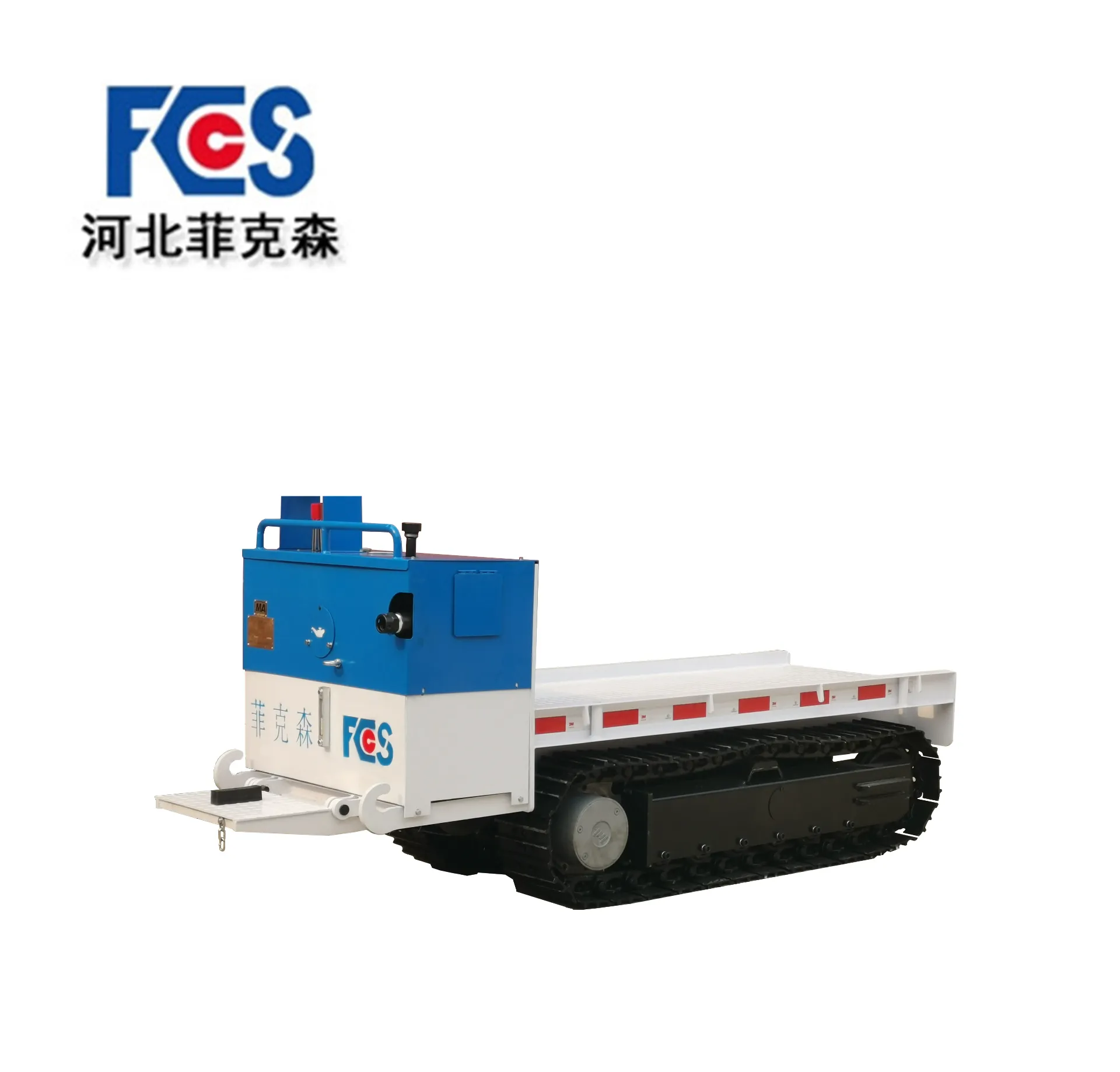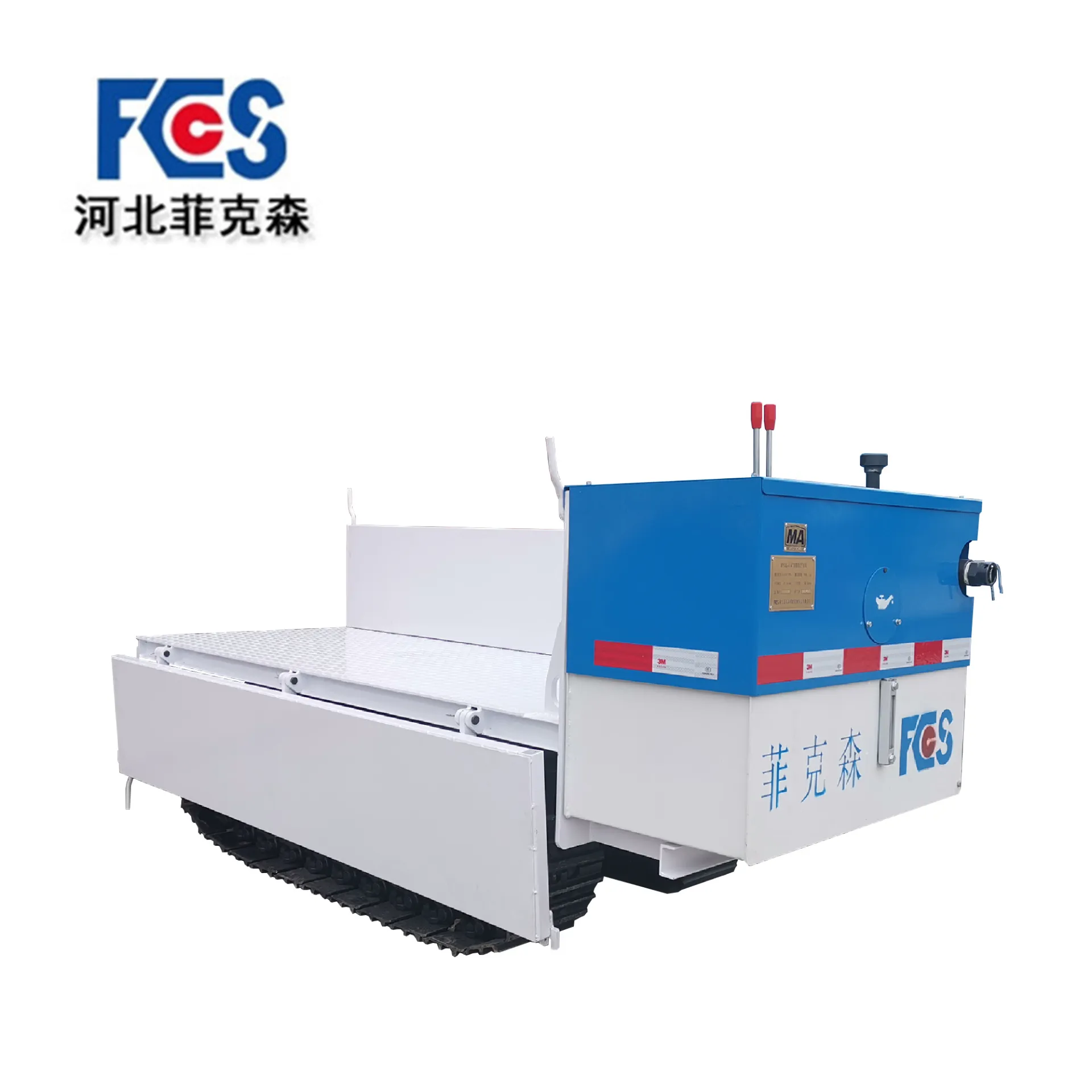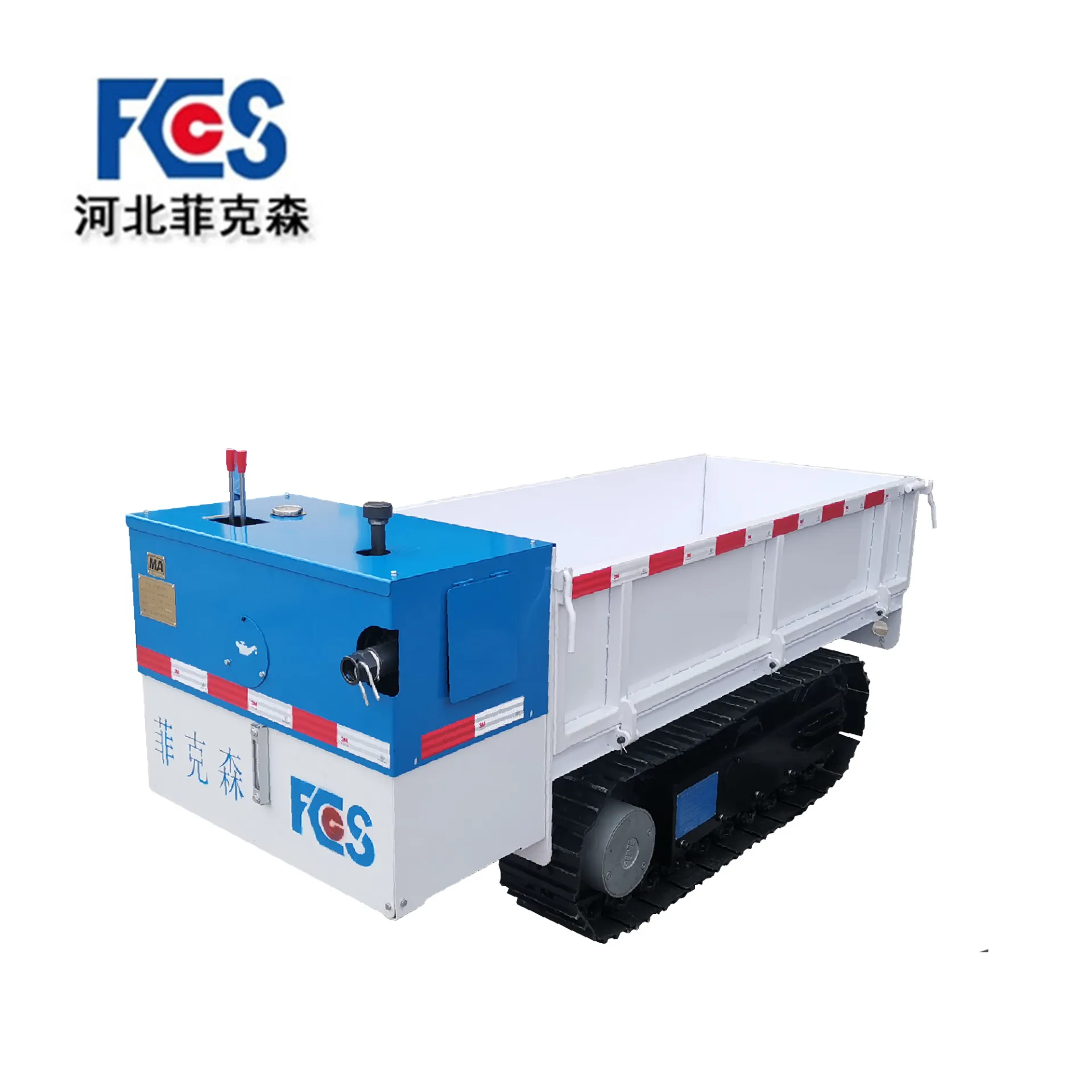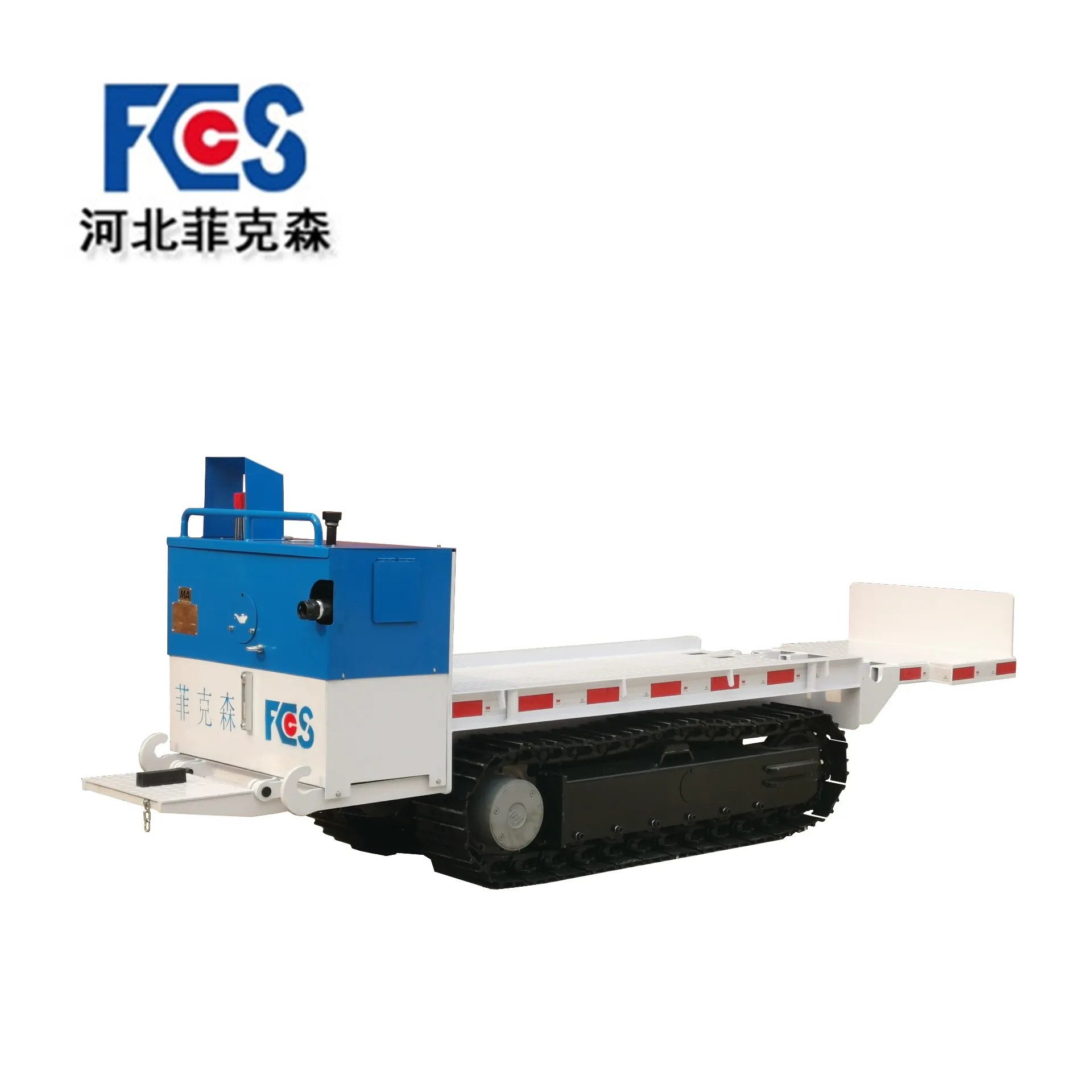Secure Flatbed Transporter Services | Heavy Equipment Hauling
The Evolution and Strategic Importance of Flatbed Transporters in Modern Logistics
In the intricate landscape of modern industrial logistics and heavy equipment transport, the Flatbed Transporter stands as an indispensable asset, representing the backbone of countless operational successes across diverse sectors. These highly specialized vehicles are engineered to accommodate oversized, heavy, or irregularly shaped cargo that cannot be transported via enclosed trailers, ranging from construction machinery and drilling rigs to pre-fabricated structural components and large-scale industrial equipment. The global market for heavy-duty transport solutions, including flatbed transporters, is currently experiencing significant growth, driven by escalating infrastructure development worldwide, particularly in emerging economies, and the continuous expansion of energy, mining, and manufacturing sectors. Key trends indicate a robust demand for transporters offering enhanced payload capacities, superior maneuverability, and advanced safety features, propelled by stringent regulatory frameworks and a universal drive towards greater operational efficiency and sustainability. Technological advancements, such as intelligent load balancing systems, remote diagnostics, and improved material sciences, are continually redefining performance benchmarks, ensuring that modern flatbed transporters are not merely hauling mechanisms but sophisticated logistical tools. These innovations are critical for navigating challenging terrains and adhering to tight project schedules, thereby minimizing downtime and maximizing productivity for industries that rely on the timely and secure movement of substantial assets. This foundational capability underpins the strategic relevance of these transporters in facilitating critical supply chains that connect production sites with operational fronts, making them pivotal for project execution and overall economic development.

Precision Engineering: The Manufacturing Process of a Flatbed Transporter
The production of a Flatbed Transporter is a complex, multi-stage engineering endeavor that prioritizes structural integrity, durability, and operational safety, adhering to the most rigorous industry standards. The process typically commences with the meticulous selection of high-strength low-alloy (HSLA) steel, often specified to ASTM A572 Grade 50 or equivalent European standards (e.g., S355JR), known for its exceptional yield strength and fatigue resistance, crucial for bearing immense dynamic loads. Fabrication begins with precision cutting of steel plates and beams using advanced CNC plasma or laser cutting machines, ensuring exact component dimensions and minimizing material waste. This is followed by robust welding processes, predominantly submerged arc welding (SAW) for main beams and flux-cored arc welding (FCAW) for secondary structures, conducted by certified welders to achieve full penetration welds that are ultrasonically tested for imperfections, adhering strictly to AWS D1.1 structural welding code. Critical components like kingpins, suspension linkages, and axle housings often undergo forging or casting processes to achieve optimal material grain structure and enhanced mechanical properties, followed by precise CNC machining to meet tight tolerances, especially for bearing surfaces and mounting points. Surface preparation is paramount for longevity; sandblasting to Sa2.5 grade removes impurities before applying multi-layer epoxy and polyurethane coating systems, offering superior corrosion resistance even in harsh environments, such as those encountered in coastal petrochemical facilities or mining operations. Every stage, from material input to final assembly, is subject to stringent quality control checks, including non-destructive testing (NDT) methods like magnetic particle inspection (MPI) and radiographic testing (RT) for critical welds, along with dimensional accuracy checks, pressure testing of hydraulic systems, and rigorous load simulations. This meticulous manufacturing protocol ensures that each Flatbed Transporter not only meets but often exceeds international standards such as ISO 9001 for quality management and relevant ANSI/ASME standards for mechanical components, guaranteeing an expected service life ranging from 15 to 25 years under typical operating conditions. Such adherence to quality results in significant operational advantages for end-users, including reduced maintenance cycles and enhanced safety, making these transporters highly energy-efficient and reliable assets for industries like oil & gas, heavy construction, and infrastructure development, where their anti-corrosion properties and robust design contribute directly to project continuity and cost savings over their extensive operational lifespan.

Technical Parameters and Performance Benchmarks
Understanding the core technical parameters of a Flatbed Transporter is crucial for effective deployment and optimal performance in demanding B2B environments. Key specifications typically include payload capacity, which can range from 20 tons for standard models to over 200 tons for multi-axle heavy-haul configurations, directly influencing the type and weight of cargo that can be transported. Deck length and width are also critical, dictating the dimensions of permissible loads, with modular designs often allowing for extensions to accommodate exceptionally long items. Suspension systems are paramount; options include mechanical spring suspensions for cost-effectiveness, air ride suspensions for sensitive cargo and improved ride quality, and advanced hydropneumatic suspensions (often seen in self-propelled modular transporters or SPMTs), offering precise height adjustment, axle load equalization, and superior stability over uneven terrain. Axle configuration, such as tandem, tridem, or multi-line axles, impacts load distribution and maneuverability, with steering axles (manual, remote, or self-steering) significantly enhancing cornering capabilities in confined spaces. Material specifications for the main frame, often high-tensile steel like Q345B or Weldox 900, ensure maximum strength-to-weight ratio and resilience against dynamic stresses. Braking systems, commonly air-actuated drum or disc brakes with ABS/EBS integration, provide reliable stopping power, a critical safety feature. The tare weight of the transporter itself is a significant factor, impacting fuel efficiency and gross vehicle weight ratings. Advanced models frequently integrate telematics for real-time tracking, load monitoring, and predictive maintenance, enhancing operational visibility and minimizing unexpected downtime. For instance, in mining applications, a Flatbed Transporter might require a reinforced deck to withstand point loads from excavator tracks, coupled with heavy-duty off-road tires and a high ground clearance. Conversely, for transporting sensitive aerospace components, an air-ride suspension with minimal vibration transfer would be prioritized. These detailed technical considerations are essential for matching the right transporter to the specific operational demands, ensuring both safety and efficiency in complex logistical operations.
| Feature | Specification Range | Benefit/Application |
|---|---|---|
| Payload Capacity | 20 - 250+ Tons | Versatility for light to super heavy cargo (e.g., excavators, bridge sections, wind turbine components). |
| Deck Length (Standard) | 12m - 18m (40ft - 60ft) | Accommodates a wide range of industrial equipment and modular structures. |
| Deck Width | 2.5m - 3.5m (8.2ft - 11.5ft) | Standard and oversized width options for various load profiles. |
| Axle Configuration | 2 to 10+ Axles | Optimized load distribution, reduced ground pressure, enhanced stability. |
| Suspension Type | Mechanical, Air Ride, Hydropneumatic | Adaptability for rough terrain, sensitive cargo, and precise leveling. |
| Main Frame Material | High-Tensile Steel (e.g., Q345B, Weldox 700/900) | Exceptional strength-to-weight ratio, increased durability, extended service life. |
| Braking System | Dual-line Air Brakes with ABS/EBS | Enhanced safety, shorter stopping distances, improved control. |
| Steering Options | Fixed, Manual Steering, Hydraulic Steering, Self-Steering | Improved maneuverability in tight spots, reduced tire wear, precision steering. |

Versatile Applications and Unparalleled Technical Advantages
The inherent versatility of the Flatbed Transporter makes it indispensable across a spectrum of heavy industries, providing robust solutions for complex logistical challenges. In the energy sector, including oil & gas and renewable energy (wind, solar), these transporters are critical for moving drilling rigs, wellhead equipment, transformers, and turbine blades to remote or challenging sites. The construction industry relies on them for relocating pre-fabricated concrete sections, heavy machinery like bulldozers and cranes, and structural steel beams, facilitating rapid project progression. For the metallurgy and mining sectors, flatbeds are essential for transporting large castings, ore processing equipment, and massive components within and between facilities. Furthermore, in the shipbuilding and aerospace industries, they are utilized for moving large vessel sections, aircraft fuselage components, and specialized tooling. In urban development and infrastructure projects, flatbed transporters efficiently move bridge segments, large pipes for water supply and drainage systems, and specialized tunneling equipment. The technical advantages offered by modern flatbed transporters are multifaceted, extending beyond mere load-bearing capabilities. Their open-deck design provides unparalleled flexibility for loading and unloading oversized or oddly shaped cargo from any angle, which is often impossible with enclosed trailers, significantly reducing loading times and associated labor costs. Advanced suspension systems, particularly those with hydraulic steering, offer superior maneuverability and axle load equalization, allowing for safe navigation through congested urban areas or challenging off-road terrains with minimized risk of rollovers or damage to cargo. The use of high-strength steel and advanced welding techniques contributes to a lower tare weight while maintaining maximum payload capacity, leading to improved fuel efficiency and reduced operational costs over the transporter's lifespan. Integrated safety features, such as multiple lashing points, anti-slip deck surfaces, and comprehensive braking systems with electronic stability control (ESC), ensure maximum cargo security and operator safety, adhering to stringent regional and international transport regulations. The anti-corrosion treatments applied during manufacturing ensure exceptional longevity, even when exposed to harsh environmental conditions, significantly lowering maintenance demands and extending the investment's value. These combined attributes make the Flatbed Transporter a cost-effective, reliable, and highly adaptable solution for enterprises seeking to optimize their heavy logistics operations and ensure uninterrupted project timelines.

Manufacturer Comparison and Tailored Solutions
When procuring a Flatbed Transporter, a thorough comparison of manufacturers is essential, as offerings vary significantly in terms of engineering philosophy, technology integration, and after-sales support. Leading manufacturers typically differentiate themselves through innovations in lightweight yet robust materials, advanced hydraulic and electronic systems, and modular designs that allow for greater flexibility and scalability. For instance, some manufacturers specialize in ultra-heavy-duty transporters for mining or offshore applications, emphasizing extreme load capacities and ruggedness, while others focus on modular solutions for road transport, prioritizing adaptability for diverse cargo sizes and regulatory compliance. Key differentiators include the type of suspension offered (e.g., rigid, air, hydraulic, independent wheel suspension), braking system sophistication (e.g., EBS/ABS, disc vs. drum), axle line options, and the degree of customization available for specific industry needs. For example, a client in the petrochemical industry might require a flatbed with specific anti-corrosion coatings and explosion-proof electrical systems, while a client in the precast concrete sector might prioritize a low-profile deck height and hydraulic ramps for easy loading. FCCS Drilling, with its deep expertise in specialized drilling and heavy transport solutions, distinguishes itself through a commitment to bespoke engineering, leveraging over two decades of industry experience to deliver highly customized Flatbed Transporters. Our approach involves a comprehensive consultation process to understand the precise operational requirements, environmental conditions, and logistical challenges faced by each client. This leads to tailored designs incorporating specific deck configurations, axle groupings, steering mechanisms, and load securing systems. We offer solutions ranging from extendable flatbeds for variable length cargo to specialized low-bed designs for height-restricted routes, ensuring optimal performance and compliance. Our engineers work collaboratively with clients, utilizing advanced CAD/CAE software for design optimization and performance simulation, guaranteeing that the final product not only meets but exceeds functional expectations. This personalized service, combined with our rigorous adherence to international quality standards such as ISO 9001:2015 and a proven track record of successful deployments in challenging global environments, positions us as a preferred partner for complex heavy transport solutions. Our commitment to innovation means integrating the latest advancements in materials science and intelligent transport systems, providing a competitive edge in efficiency, safety, and long-term value, enabling businesses to overcome their unique transport obstacles with confidence and precision. This comprehensive service model underscores our belief that the right transport solution is not off-the-shelf but meticulously crafted to fit the client's operational fingerprint.
| Feature/Criteria | Typical Industry Standard | FCCS Drilling Custom Solution |
|---|---|---|
| Payload Capacity | Fixed, up to 100 Tons | Flexible, up to 250+ Tons or modular (scalable) |
| Deck Configuration | Standard fixed length/width | Extendable, low-bed, gooseneck, specialized well deck options |
| Suspension System | Mechanical or basic Air Ride | Advanced Hydropneumatic, independent wheel suspension, customizable leveling |
| Axle Lines/Steering | Fixed axles, limited steering | Multi-line steerable axles, remote-controlled steering, enhanced maneuverability |
| Material Selection | Standard structural steel | High-tensile, anti-corrosion treated alloys (e.g., Weldox, Hardox) |
| Safety Features | Basic braking, standard tie-downs | EBS/ABS, advanced load securing, integrated telematics, anti-slip deck coatings |
| Regulatory Compliance | General certifications | Tailored to specific regional/international road regulations (e.g., gross weight, dimensions) |
| Specialized Features | Limited | Hydraulic ramps, self-loading capabilities, specialized lighting, explosion-proof systems |

Real-World Application Cases and Client Successes
The practical utility and demonstrable effectiveness of Flatbed Transporters are best illustrated through real-world application cases, showcasing their critical role in facilitating large-scale industrial projects. For instance, in a recent major infrastructure project in the Middle East, our customized multi-axle flatbed transporters were deployed to transport oversized pre-stressed concrete bridge girders, each weighing over 80 tons, across challenging desert terrains to construction sites. The integrated hydraulic steering and load-leveling capabilities of these units ensured precise maneuvering through tight turns and over uneven ground, significantly reducing transit times and eliminating the need for multiple smaller loads, which would have increased operational costs and carbon footprint. Clients reported a 30% reduction in overall transport time compared to conventional methods, directly impacting project completion deadlines. Another compelling case involved a leading renewable energy developer who utilized our extendable flatbed transporters for the logistical challenge of moving 70-meter wind turbine blades from the port to remote wind farm locations in mountainous regions. The extendable deck allowed for precise length adjustments, complying with varied road regulations while navigating winding mountain roads. The robust chassis and advanced suspension systems minimized vibration, protecting the delicate composite structures of the blades. Client feedback highlighted the exceptional stability and ease of operation, contributing to a zero-incident transport record for over 150 blades. In the oil and gas sector, a specialized Flatbed Transporter with an integrated well-deck was instrumental in moving a fully assembled drilling rig, weighing 150 tons, within an active refinery. The low-profile design facilitated passage under existing pipe racks and overhead structures, a critical requirement for safety and efficiency within the constrained operational area. This particular solution saved the client days of dismantling and reassembling the rig, translating into significant cost savings and reduced operational downtime. These examples underscore not just the technical prowess of these transporters but also the tangible economic and operational benefits they deliver, from accelerating project timelines and reducing labor costs to enhancing safety and ensuring the integrity of high-value cargo. Our long-standing partnerships with global leaders in energy, construction, and mining, spanning over two decades, are a testament to our commitment to delivering reliable, high-performance transport solutions that address the unique and evolving needs of our esteemed clientele, consistently exceeding expectations in the most demanding operational landscapes.
FCCS Drilling’s commitment to client success extends beyond product delivery to comprehensive after-sales support and partnership development, ensuring maximum uptime and operational longevity. We maintain a proactive service approach, offering scheduled maintenance, on-demand technical assistance, and a readily available inventory of genuine spare parts to minimize any potential downtime. Our dedicated customer support team is available 24/7 to address any operational queries or technical issues that may arise, providing prompt and expert guidance. Each Flatbed Transporter supplied by FCCS Drilling comes with a robust warranty package, typically a 2-year full warranty on structural components and a 1-year warranty on major wear parts, underscoring our confidence in the quality and durability of our products. Delivery cycles are carefully managed and communicated, with standard configurations typically delivered within 8-12 weeks from order confirmation, while highly customized units may require 16-24 weeks depending on complexity. This transparency in delivery timelines allows clients to plan their projects with precision. For instance, in a critical mining project, our ability to deliver a custom-designed heavy-duty Flatbed Transporter within a compressed 14-week schedule directly enabled the client to commence operations ahead of their initial projections, leading to substantial early revenue generation. We also provide extensive training for client operators and maintenance staff, ensuring they are proficient in the safe and efficient operation and basic upkeep of the transporters. This holistic support system, encompassing pre-sales consultation, custom engineering, timely delivery, and comprehensive after-sales service, establishes a foundation of trust and reliability that is paramount in the B2B sector. Our adherence to international certifications like ISO 9001 and our long-standing relationships with industry-leading component suppliers further reinforce the authoritativeness and trustworthiness of our solutions, making FCCS Drilling a reliable partner for your most demanding heavy transport needs.
Frequently Asked Questions (FAQ)
Q1: What types of cargo can a Flatbed Transporter typically handle?
A Flatbed Transporter is exceptionally versatile and designed to handle a wide range of oversized, heavy, and irregularly shaped cargo that traditional enclosed trailers cannot accommodate. This includes, but is not limited to, heavy construction machinery such as excavators, bulldozers, cranes, and loaders; large industrial components like transformers, generators, and manufacturing equipment; oil & gas drilling rigs and associated wellhead equipment; pre-fabricated structures like bridge sections, concrete beams, and modular buildings; wind turbine components (blades, nacelles, tower sections); and even large vehicles or specialized agricultural equipment. Its open-deck design allows for flexible loading and unloading, often from multiple angles, making it ideal for cargo that requires specialized lifting equipment or has non-standard dimensions. The adaptability of a flatbed ensures that it can cater to the unique logistical demands of industries such as construction, energy, mining, infrastructure development, and heavy manufacturing, providing a secure and efficient transport solution for critical assets that are fundamental to project execution and operational continuity. The robust engineering ensures safe transport even over long distances and challenging terrains.
Q2: How are Flatbed Transporters customized for specific industry needs?
Customization for a Flatbed Transporter is a core aspect of our service, allowing us to tailor solutions precisely to unique operational requirements. This involves adjusting various technical parameters and integrating specialized features. For instance, the deck configuration can be customized to be extendable for varying cargo lengths, feature a low-bed design for height-restricted routes, or include a specialized well-deck for optimal center of gravity with extremely tall loads. Axle configurations can be modified to include additional steerable axles for enhanced maneuverability in confined spaces or to distribute exceptionally heavy loads more evenly to comply with axle weight regulations. Suspension systems can be specified, from robust mechanical suspensions for raw durability to advanced hydropneumatic systems offering precise height adjustment and superior ride quality for sensitive cargo. Furthermore, specialized features like hydraulic ramps for self-loading equipment, advanced load-securing systems, anti-corrosion treatments for harsh environments (e.g., marine or chemical industries), explosion-proof electrical systems for hazardous zones, and integrated telematics for real-time tracking and diagnostics can be incorporated. Our engineering team collaborates closely with clients to define these specifications, utilizing advanced simulation tools to ensure that the customized Flatbed Transporter not only meets but surpasses performance expectations, contributing directly to the client's operational efficiency and safety goals in their specific industrial context.
Q3: What are the key safety features incorporated into Flatbed Transporter designs?
Safety is paramount in the design and operation of any Flatbed Transporter, particularly when dealing with oversized and heavy loads. Modern transporters incorporate a suite of advanced safety features to ensure maximum protection for cargo, operators, and the surrounding environment. Key features include robust braking systems, typically dual-line air brakes with Anti-lock Braking System (ABS) and Electronic Braking System (EBS) integration, which significantly enhance stopping power and prevent skidding, especially in adverse weather conditions. The deck surface is often treated with anti-slip coatings or designed with diamond plate patterns to provide maximum traction for loaded machinery and personnel. Numerous strategically placed lashing points and heavy-duty D-rings are integrated into the chassis, allowing for secure fastening of cargo using chains, binders, and straps, preventing shifting during transit. Advanced models may also include integrated load sensors and telematics systems that provide real-time monitoring of axle loads, tire pressure, and cargo position, alerting operators to potential imbalances or shifts. Comprehensive lighting systems, including LED marker lights and conspicuity tape, enhance visibility during night operations or in low-light conditions. Furthermore, hydraulic steering systems improve maneuverability, reducing the risk of accidents in tight turns or congested areas. Overall structural integrity, achieved through high-strength materials and advanced welding techniques, is a foundational safety feature, ensuring the transporter can withstand extreme stresses without structural failure. Adherence to international safety standards, such as those prescribed by regulatory bodies for heavy vehicle transport, is a non-negotiable aspect of the design and manufacturing process, reflecting a commitment to operational excellence and accident prevention.
Authoritative References
- European Association of Abnormal Road Transport and Mobile Cranes (ESTA). "Best Practice Guide to Heavy Transport."
- American Society of Mechanical Engineers (ASME). "ASME B30.22 Articulating Boom Cranes with Flatbed Transporters Safety Standard."
- International Organization for Standardization (ISO). "ISO 9001: Quality Management Systems – Requirements."
- National Cooperative Highway Research Program (NCHRP). "NCHRP Synthesis 535: Practices for Permitting Overweight and Oversize Vehicles."
- Journal of Heavy Vehicle Engineering. "Innovations in Suspension Systems for Heavy-Duty Transporters."



